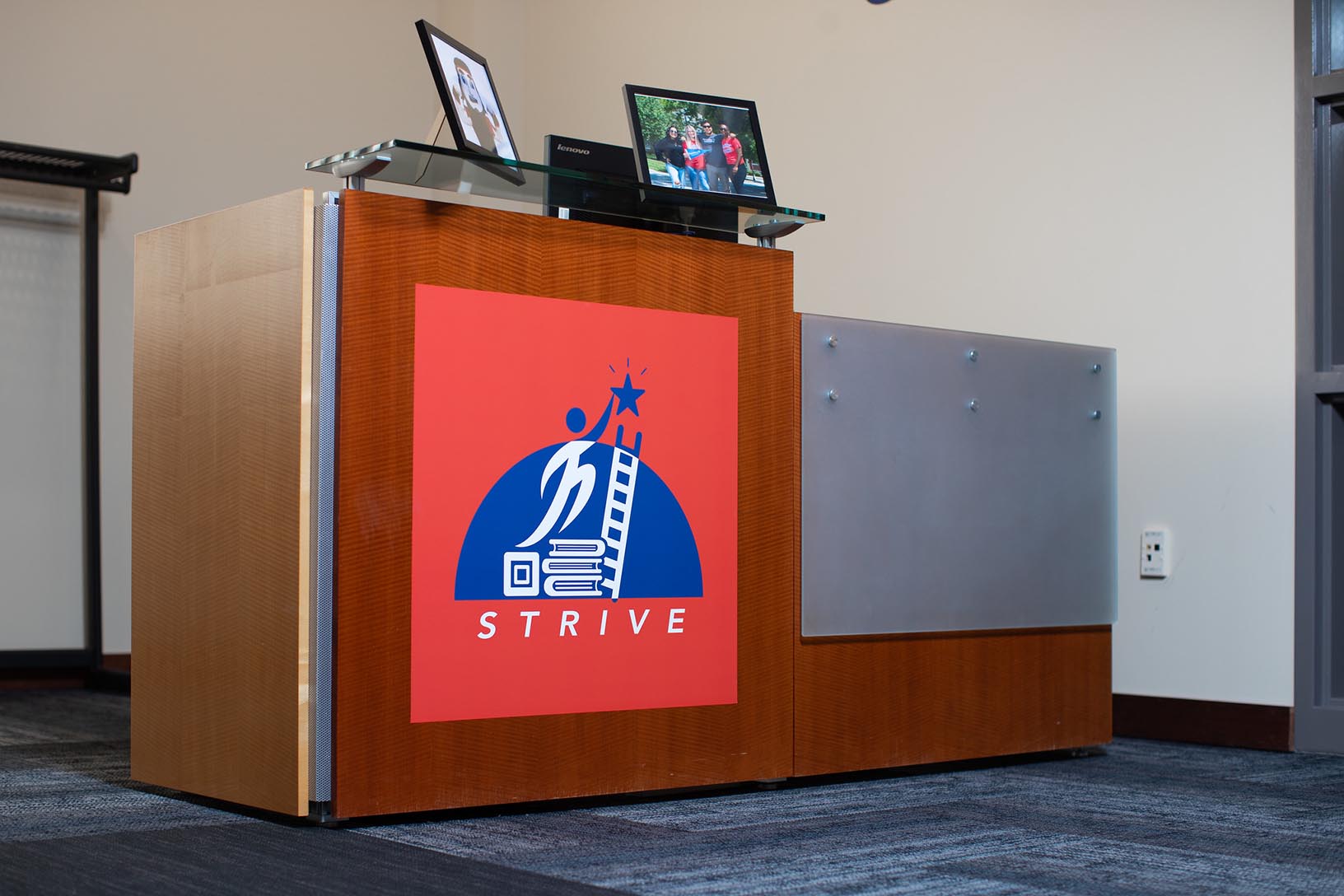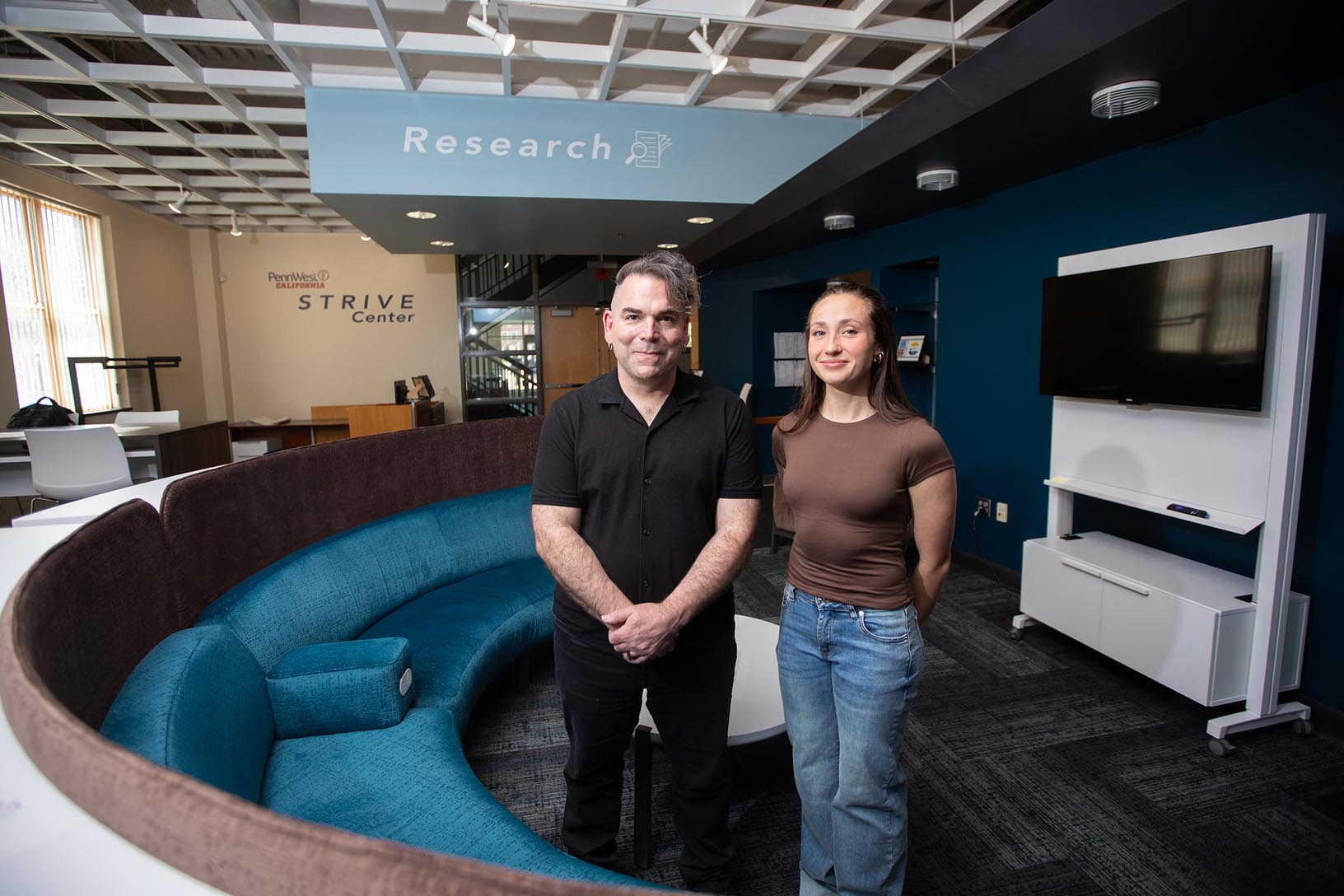Adam Leonard (left) and Madeline Curtis in the Strive Center at PennWest California.
At PennWest California, student creativity is now front and center in the newly renovated Strive Center — a space designed to inspire, support and showcase student success.
The project grew out of a partnership between the digital media technology program and campus leadership, offering

students a real-world opportunity to design for an actual client. Students in Joe Schickel’s senior-level course worked across two semesters to create proposals for the center’s branding and visual design.
Seniors Madeline Curtis and Adam Leonard were ultimately selected as the winning designers. Curtis’ logo and mural designs now adorn the Strive Center walls, while Leonard’s window graphics welcome visitors at the entrance.
Located in Eberly Hall, the Strive Center — short for Science, Technology, Research & Innovation Values Education — serves as a regional hub for workforce development, employer engagement and student outreach, connecting education to industry through events, internships and community partnerships.
“Knowing that real people were going to see and interact with our work made everyone care more,” Curtis said. “We wanted to do our best.”
For Leonard, the project offered a full creative experience, from initial design to client feedback, revisions and final installation.
“It’s rewarding to build something, take criticism, revise it and appreciate that feedback,” he said. “Seeing your work physically installed, not just living on a screen, was an incredible learning experience.”
Schickel, associate professor of digital media technology, said the project was designed to mimic the professional creative process. “We wanted students to not only apply what they’ve learned, but also to experience the give-and-take that happens when working with a client,” Schickel said.
“By the time they get to this point, they know the software, they understand design principles, and they’re learning how to think strategically.”
The experience also gave students a critical head start on building professional portfolios. Curtis plans to grow her freelance art and design business, while Leonard will pursue a teaching certification.
Both students agree the project gave them something rare: a tangible legacy. Their creativity has been built into the fabric of campus life — something future students, faculty and visitors will see for years to come.
“This was an amazing opportunity,” Leonard said. “It’s a perfect bridge between school and the real world. It’s about learning, improving and seeing your work matter.”
